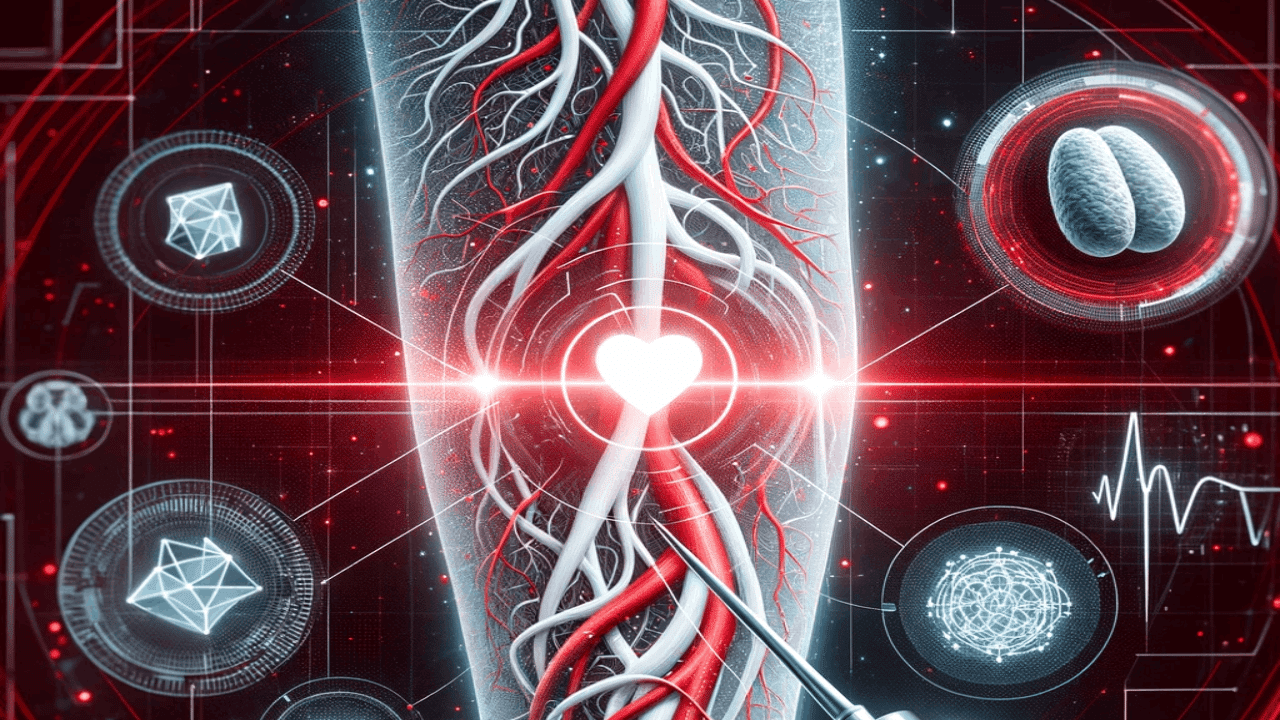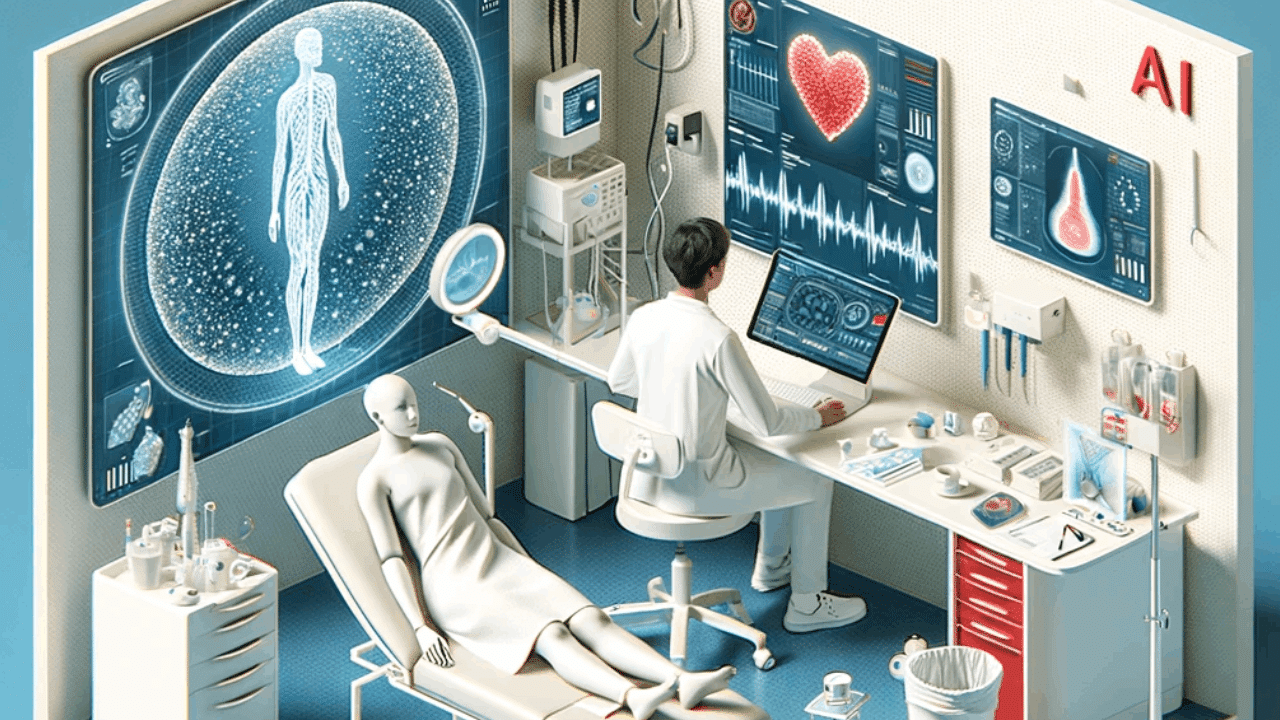Discover how AI is revolutionizing the treatment of varicose veins and chronic venous insufficiency (CVI) through thermal imaging for spider vein detection.
The Role of AI in Treating Varicose Veins and CVI: Thermal Imaging for Spider Vein Detection and Chronic Venous Insufficiency
Varicose veins and chronic venous insufficiency (CVI) affect millions. According to statistics, about 5% of people worldwide suffer from these conditions. At the same time, cardiovascular diseases are causing huge expenses. It is predicted that by 2035, the total costs of all cardiovascular diseases in the US will add up to about 1.1 trillion dollars.
Early detection and effective diagnostics can reduce these expenses and relieve patients’ suffering.
Technological advancements, specifically artificial intelligence (AI), are making promises in diagnosing and treating varicose veins and CVI.
In this article, we shall discuss one of the recent breakthroughs in medical tech, such as the use of thermal imaging for spider vein detection.
Understanding Varicose Veins and Chronic Venous Insufficiency
Before delving into the role of AI in treating varicose veins and CVI, it is important to understand these conditions. Varicose veins are enlarged, twisted veins that typically occur in the legs and are caused by weakened valves that allow blood to pool. CVI, on the other hand, is characterized by the inadequate flow of blood from the legs back to the heart, leading to symptoms such as swelling, pain, and ulcers.
Defining Varicose Veins and CVI
Varicose veins are easily identifiable due to their visible appearance. They are often bluish or purple in color and protrude from the surface of the skin. These veins are caused by faulty valves in the veins that prevent blood from flowing properly, leading to blood pooling and the formation of varicose veins.
CVI, on the other hand, is a more complex condition that involves the failure of the one-way valves in the veins to prevent blood from flowing backward. This results in a condition where blood is unable to effectively return to the heart, leading to pooling and a range of symptoms.
The Prevalence and Impact of Varicose Veins and CVI
Varicose veins and CVI are widespread conditions that affect a significant portion of the population. They can occur in both men and women, although they are more commonly observed in women. The impact of these conditions goes beyond aesthetic concerns, with many individuals experiencing physical symptoms such as leg pain, heaviness, and fatigue.
Additionally, varicose veins and CVI can have a negative impact on a person’s quality of life, limiting their ability to engage in physical activities and causing emotional distress due to feelings of self-consciousness.
It is important to note that varicose veins and CVI are not solely cosmetic issues. While the visible appearance of varicose veins may cause individuals to feel self-conscious about their legs, the physical symptoms associated with these conditions can be debilitating. Leg pain, heaviness, and fatigue can significantly impact a person’s daily activities, making it difficult for them to carry out tasks that were once routine.
Furthermore, the emotional toll of varicose veins and CVI should not be overlooked. Many individuals with these conditions may experience feelings of embarrassment or shame, leading to a decrease in self-esteem and overall quality of life. The constant worry about the appearance of their legs can also lead to social anxiety and avoidance of certain activities or clothing choices.
It is crucial to address varicose veins and CVI not only for their physical implications but also for the emotional well-being of individuals affected by these conditions. By understanding the prevalence and impact of varicose veins and CVI, we can better appreciate the importance of finding effective treatments, such as those utilizing AI technology, to improve the lives of those affected.
The Intersection of AI and Healthcare
The integration of AI into healthcare has been a game-changer, revolutionizing various aspects of diagnosis, treatment, and patient care. AI has the potential to enhance medical decision-making, improve accuracy, and increase efficiency in healthcare settings.
One fascinating aspect of AI in healthcare is its ability to analyze genetic data to identify potential risks for certain diseases. By examining an individual’s genetic makeup, AI algorithms can predict the likelihood of developing conditions such as cancer or heart disease, allowing for proactive interventions and personalized treatment plans.
The Evolution of AI in Medicine
Today, AI is being applied in various medical specialties, including radiology, pathology, and cardiology, to assist healthcare professionals in making accurate diagnoses and creating personalized treatment plans.
Another exciting development in AI and medicine is using machine learning algorithms to predict patient outcomes based on various factors such as demographics, medical history, and treatment plans. Dr. Bhavik Patel from Mayo Clinic in Arizona believes that in the future, with the help of AI, doctors will shift from a pipeline to a platform approach in diagnostics, by being able to use all those data for diagnostics. For example, their clinic is developing an AI tool that can predict a heart attack from blood tests collected from a patient over a period of time.
By analyzing tools like the one developed by Mayo Clinic, AI can help healthcare providers tailor their approach to each patient, improving overall care and potentially saving lives.
Potential Benefits of AI in Healthcare
The implementation of AI in healthcare offers numerous benefits. AI algorithms can analyze vast amounts of data quickly and accurately, helping to identify patterns that may go unnoticed by human observers. This can lead to earlier detection of certain conditions and more targeted treatment approaches.
AI can also assist healthcare professionals in managing patient records. As of now, a third of medical practitioners spend 17 – to 25 minutes with their patients, since a lot of time is spent on paperwork. Artificial intelligence can help with the routine job, freeing more time for actual communication with patients. For example, a company called HiLabs has developed an AI-based tool that processes clinical data of patients 100 faster.
AI is great at facilitating telemedicine, enabling access to medical expertise in remote areas.
Furthermore, AI-powered virtual assistants are being developed to provide patients with personalized health recommendations, medication reminders, and lifestyle tips. These virtual assistants can enhance patient engagement and adherence to treatment plans, ultimately improving health outcomes and quality of life.
AI tools help to adjust hospital staffing. For example, Steward Healthcare, one of the largest private hospital groups in the US, has implemented AI to build schedules and manage working hours. In the result, just 1% reduction in staff during a low-volume period turned into $2 million in savings per year.
AI in the Diagnosis and Treatment of Varicose Veins
AI has the potential to revolutionize the diagnosis and treatment of varicose veins. The following examples show how.

How AI Can Improve Varicose Vein Detection
Traditional methods of varicose vein detection often rely on visual inspection and palpation. However, these methods can be subjective and prone to error. AI, on the other hand, can analyze images and identify varicose veins with a high level of accuracy.
Machine learning algorithms can be trained using a large number of images of varicose veins, allowing them to learn and recognize patterns that are indicative of these veins. By automating the detection process, AI can assist healthcare professionals in accurately identifying varicose veins and developing appropriate treatment plans.
Use case: A recent experiment carried out by a group of scientists at Karpagam Academy, India, proved that AI can improve the accuracy and efficiency of varicose vein detection. During the experiment, the researchers used 11,350 leg vein images to train an AI tool that achieved an accuracy of 98.5%.
Furthermore, AI can go beyond just identifying varicose veins. It can also provide valuable insights into the severity and progression of the condition. By analyzing the size, shape, and location of the veins, AI algorithms can help determine the stage of varicose veins and predict potential complications. This information can aid in making informed decisions about the most suitable treatment options.
AI-Driven Treatment Options for Varicose Veins
In addition to improving varicose vein detection, AI can guide treatment options. By analyzing patient data, including medical history, imaging results, and other relevant factors, AI algorithms can help healthcare professionals develop personalized treatment plans.
AI can suggest optimal treatment modalities, such as minimally invasive procedures or lifestyle changes, based on an individual’s specific condition and preferences. This personalized approach can improve treatment outcomes and patient satisfaction.
Moreover, AI can continuously monitor the progress of varicose vein treatment and make real-time adjustments if necessary. By analyzing data from wearable devices and patient feedback, AI algorithms can provide healthcare professionals with valuable insights into the effectiveness of the chosen treatment plan. This dynamic feedback loop can ensure that patients receive the most appropriate and timely interventions, leading to better long-term outcomes.
Thermal Imaging for Spider Vein Detection
Thermal imaging is another innovative technology being utilized to detect spider veins. Spider veins, also known as telangiectasias, are small, dilated blood vessels that appear as fine, red lines on the skin’s surface.
The Science Behind Thermal Imaging
Thermal imaging uses infrared technology to detect variations in skin temperature. It is a popular approach that promises to have wider applications in the near future. According to statistics, the global near-infrared imaging market is forecasted to reach a value of around 430 million U.S. dollars by 2030. That’s a considerable increase compared to the 290 million US dollars it had in 2019. With the power of AI, the thermal imaging approach has a potential to become a game changer in the early diagnostics of vascular diseases.
So, how does it work?
Spider veins, being closer to the skin’s surface, can exhibit temperature variations compared to surrounding healthy tissue. By capturing thermal images of the affected area, healthcare professionals can identify the presence of spider veins.
The Effectiveness of Thermal Imaging in Spider Vein Detection
Studies have shown that thermal imaging is an effective tool for detecting spider veins. It offers a non-invasive and painless alternative to traditional methods, such as visual inspection. Additionally, thermal imaging can provide a comprehensive overview of the affected area, helping healthcare professionals develop targeted treatment plans.
AI and Chronic Venous Insufficiency
Chronic venous insufficiency (CVI) is a condition that can benefit greatly from the integration of AI. By leveraging AI algorithms, healthcare professionals can improve the diagnosis and treatment of CVI.

AI’s Role in Diagnosing CVI
Diagnosing CVI can be challenging, as the condition may present with a wide range of symptoms. AI algorithms can analyze patient data, including medical history, symptoms, and imaging results, to identify patterns that are indicative of CVI.
By relying on AI algorithms, healthcare professionals can achieve more accurate and timely diagnoses, leading to appropriate treatment interventions and improved patient outcomes.
AI-Based Treatment Approaches for CVI
AI can also assist in guiding treatment approaches for CVI. By analyzing patient data and considering individual characteristics, such as age and overall health status, AI algorithms can suggest optimal treatment modalities.
This personalized approach can enable healthcare professionals to develop treatment plans that address the unique needs of each patient, leading to improved outcomes and greater patient satisfaction.
Summing up
In conclusion, the integration of AI and thermal imaging is revolutionizing the diagnosis and treatment of varicose veins and CVI. AI algorithms can enhance varicose vein detection and guide treatment options, while thermal imaging provides a non-invasive and effective method for spider vein detection. With these advancements, healthcare professionals can provide more accurate diagnoses, personalized treatment plans, and improved patient outcomes. The role of AI in treating varicose veins and CVI is continually evolving, promising brighter prospects for individuals affected by these conditions.
Interested in a customized AI solution for diagnostics?
Contact eNest for a free consultation and advice. Our AI specialist will answer all your questions in a one-on-one call. You’ll also receive an approximate cost and timeline calculation for the future project. Book a call now!
Have a question?
Speak to Data Scientist
 Jagdeep Chawla
Jagdeep ChawlaMS in Data Science
NorthWestern Univeristy, Illinois
MS in Data Science
NorthWestern Univeristy, Illinois




